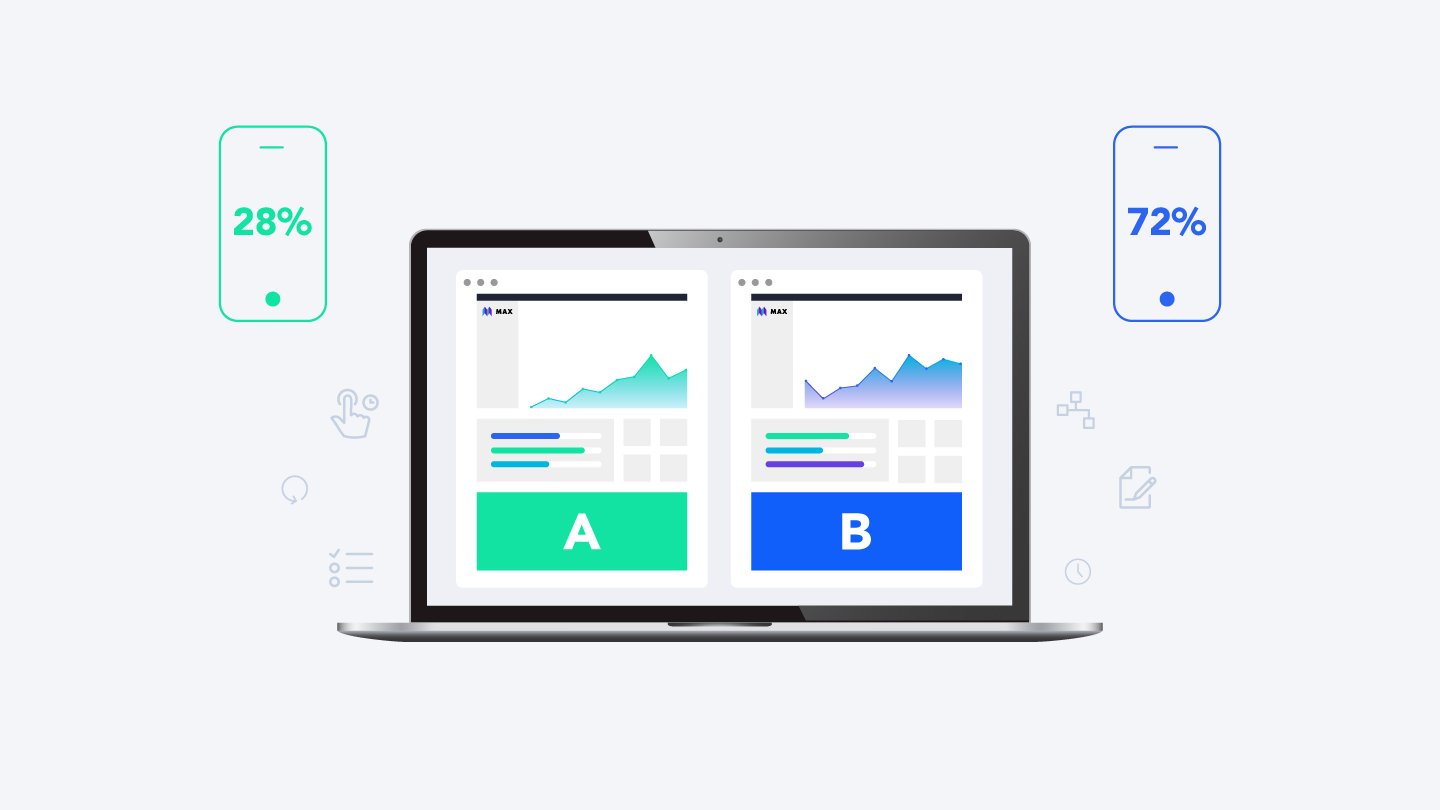What is A/B Testing
A/B testing is a method of comparing two versions of a webpage or application to determine which performs better. It involves presenting two variants (A and B) to users and analyzing which version yields better results based on predefined metrics.
Why A/B Testing can be a game changer for your business success
In the ever-evolving landscape of digital marketing, A/B testing emerges as the linchpin for success. By meticulously testing variations of your web elements, from headlines to call-to-action buttons, you unlock the power to finely tune your online presence.
This data-driven approach not only optimizes conversion rates but also hones in on the nuances of user preferences, paving the way for an enhanced user experience.
Our A/B testing process begins with a crystal-clear objective, ensuring every experiment aligns with your overarching goals. Through rigorous hypothesis formation, we pinpoint the variables that could propel your metrics to new heights.
Our team crafts compelling variations, meticulously designed to tease out the subtle nuances that resonate most with your audience.
Random assignment ensures a fair and unbiased distribution of traffic, and as data accumulates, our statistical analysis sharpens the focus on meaningful insights.
The winning variation, backed by statistical significance, becomes the blueprint for success. Continuous iteration ensures your online presence remains dynamic, always adapting to the ever-changing landscape of user preferences.
Embracing A/B testing is not just about data; it’s about fostering a culture of continuous improvement. By optimizing for conversions, engagement, and user satisfaction, you not only mitigate risks but also allocate resources where they matter most.
This cost-effective strategy empowers you to stay ahead in the competitive digital realm.
In the realm of SEO, A/B testing becomes your secret weapon. Fine-tune headlines and content to resonate with search algorithms, ensuring your website not only attracts but retains the right audience.
Mobile or desktop, every platform is a canvas for experimentation, allowing you to tailor your approach for maximum impact.
Unlock the potential of your digital presence with A/B testing – where data meets strategy, and success becomes a science.
For our clients A/B testing allows the optimization of digital products by making data-driven decisions to enhance user experience and achieve specific business objectives.
Process Overview:
Identify Objective: Clearly define the goal of the A/B test, whether it’s increasing click-through rates, improving conversion rates, or enhancing user engagement.
Hypothesis Formation: Develop hypotheses about the changes that could positively impact the chosen metric. These hypotheses guide the creation of variations for testing.
Create Variations: Develop two versions (A and B) of the element or page being tested, with only one variable changed between them. This variable could be anything from color schemes to text content.
Random Assignment: Randomly assign visitors to either version A or B to ensure a representative sample.
Collect Data: Gather data on the performance of each version. This may involve metrics like conversion rates, bounce rates, and engagement levels.
Statistical Analysis: Use statistical methods to determine if the differences in performance are statistically significant.
Implement Winning Version: If one version significantly outperforms the other, implement the winning variation as the new standard.
Iterate: Continuously repeat the process, iterating and testing new hypotheses to further optimize the webpage or app.
Importance:
User Experience Enhancement: A/B testing identifies elements that resonate best with users.
Data-Driven Decisions: Insights derived drive product improvements and optimizations.
Performance Optimization: Helps in refining aspects for better engagement and conversions.
Data-Driven Decision Making: A/B testing allows marketers and web developers to make decisions based on actual user behavior rather than assumptions.
Optimizing Conversions: By identifying and implementing the most effective elements, A/B testing helps improve conversion rates, leading to increased sales or desired user actions.
User Experience Enhancement: Understanding user preferences through A/B testing enables the creation of more user-friendly and engaging interfaces.
Risk Mitigation: Before implementing widespread changes, A/B testing allows for low-risk

Your Business Benefits:
- Improved Conversion Rates: Identifying and implementing elements that boost conversions.
- Enhanced User Experience: Implementing changes based on user preferences and behavior.
- Informed Decision-Making: Using data to make strategic improvements to digital products.
Your Business Strategies:
- Identify Goals: Define clear objectives for what needs testing and what success looks like.
- Test Elements: Experiment with various elements, from design to functionality.
- Analyze and Implement: Based on results, implement changes that enhance performance.

